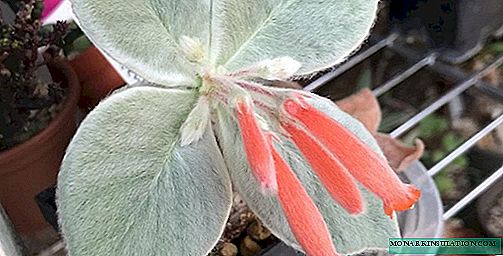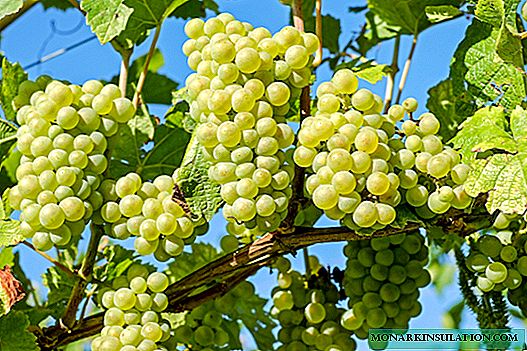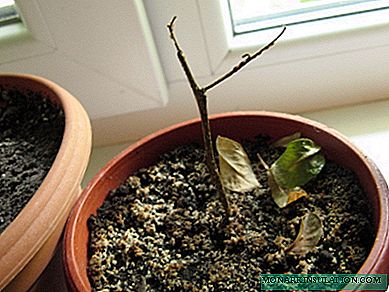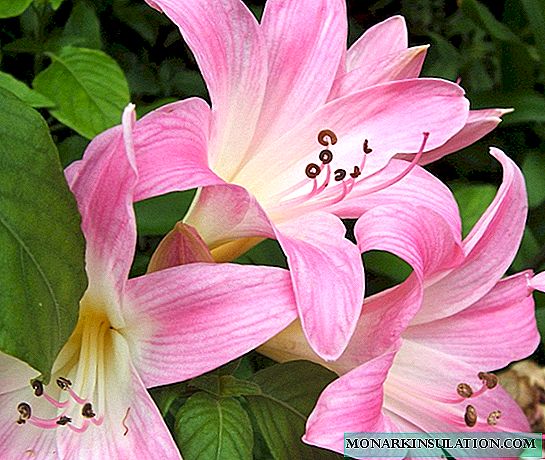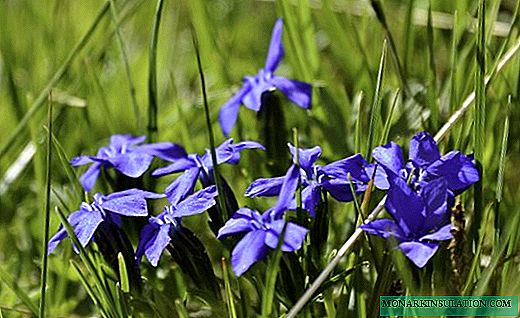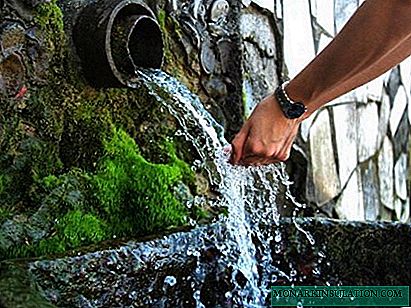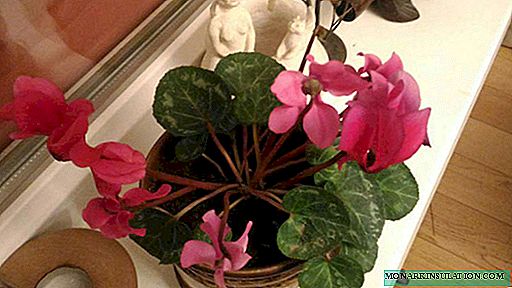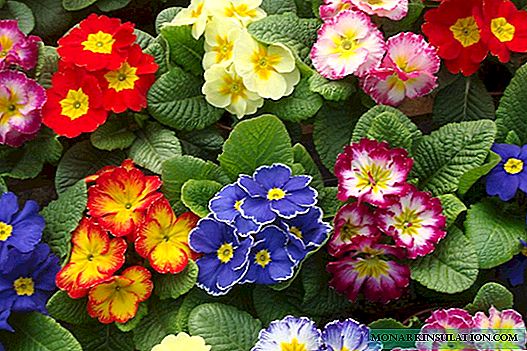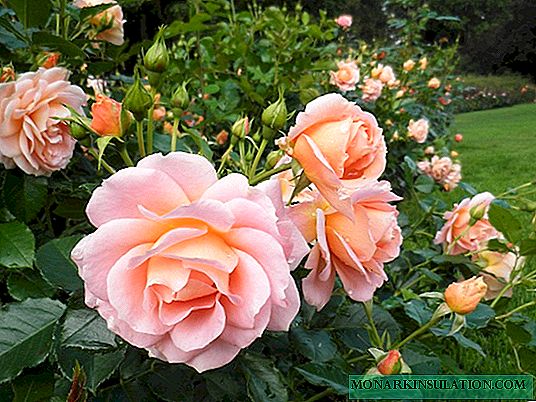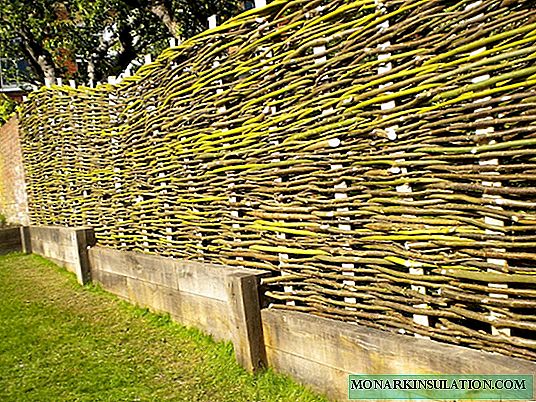
The popularity of the rustic style in rural landscape design is determined by the natural naturalness of its elements: wicker hedges, wooden arbors, decorative benches ... A wicker wooden fence is to the liking of many owners of country houses who want to distract from everyday life and arrange a natural design with rustic motifs on their plot. Making wattle is a fairly simple task, overpowering which anyone can handle. It is not for nothing that wicker fences have been met very often in many settlements for a long time. Today, the rustic style is again not the pinnacle of recognition, and therefore such a handmade design can serve as a worthy decoration of the garden.
Varieties of wicker fencing
There are three types of wicker fences, each of which has its own height and functional value.
- Low fences, the height of which does not exceed 1 meter. They are widely used as decorative elements of landscape design: for fencing flower beds and paths of the site.
- Medium meter-high fences. They are good for zoning the site. Fences of this height allow emphasizing the boundaries of space, but at the same time they will not create the illusion of isolation.
- High two-meter wattle can act as a full-fledged fence or fence. They are equipped mainly on the external borders of the site.
The service life of the fence depends on the materials of manufacture. A fence woven from cattail or reeds will last no more than three to four years. Wattle from a vine, hazel or willow will last for up to ten years. But in order to be able to admire a beautiful wicker fence for a longer period, it is necessary to protect the wood by treating it with antiseptic compounds.

If we take the weaving method as the basis, then the fence can be made using horizontal or vertical weaving technique
We select the basis for the future fence
A wicker fence, like any enclosing structure, consists of supporting posts and sections, which are interwoven thin branches or rods. To equip the fence, you can use wooden stakes or metal poles.
A significant drawback of such stakes is that they are prone to decay, and this significantly reduces the life of the fence. To protect the stakes at the site of the future wattle fence, you can equip a trench in which the soil is replaced with a layer of sand. Water flowing to the base of the fence will simply seep through the sand, and the wood will not rot. The stakes themselves are preferably pre-treated with an antiseptic chemical composition. To increase the stability of the fence stakes must be buried no less than half a meter. Metal poles are used in the construction of high two-meter wattle fence.

Vertically driven wooden stakes 3-5 cm thick will serve as a good support for low decorative fences

To give the fence a more natural and attractive appearance, it is advisable to paint the posts in the color of braided branches or vines
Stakes or poles are placed at a distance of half a meter. As practice shows, such a step is most convenient for braiding both flexible willow twigs and more rigid branches. The choice of the ball is determined taking into account the thickness and flexibility of the rods, as well as the design idea of the master.
Advice! Along the entire trench, support columns are placed at an equidistant distance, and closer to the edges of the fence it is better to install them more often. Such placement of the supports will create a kind of lock to secure the ends of the rods.
Harvesting the “Right” Rods
Traditionally, willow, willow, or hazel branches are used to make wattle. But in the absence of the opportunity to purchase or stock up on a flexible vine, you can always weave a fence of thin annual branches of fruit trees in the garden.

For high fences, branches up to three centimeters thick are suitable, for low decorative fences it is better to use one or two centimeter rods
For cuts, even long shoots are suitable. They can be cut, dried and stored in small bundles for a long time. For the manufacture of wattle, you can even use freshly cut rods with green leaves.
Branches prepared for weaving must be thoroughly soaked. This will give them flexibility by restoring the circulation of juice. Flexible rods will be easier to weave, forming simple horizontal or unusual fancy patterns.
Advice! To steam the branches and make them more flexible for a while, but after drying, to restore the former strength, you can arrange a "steam bath". But such a procedure can be used only for untreated and varnished rods.
Weaving rules and decorating techniques
Weaving rods begin to perform from the bottom row, gradually rising to the top of the fence.

The rods are held in wavelike movements alternately between adjacent support pillars, stretching along the entire length
The branches should wrap around the support stakes with a flexible part, forming a figure of eight, in which each subsequent rod is a continuation of the previous one. So that in the process of weaving the fence does not lead to the side, it is better to attach the tops of the supports to flat strips, removing them before braiding the last row.
During weaving, it is important to ensure that the ends of the rods are located on the inside of the fence. So that the fence does not crumble, the ends of the rods can be neatly fixed with a wire, and the sticking out “tails” can be cut with a knife. The ends of the last row are not cut off, but imperceptibly refuel along the stakes.
Here are a couple of video instructions from summer residents:
Ready wattle can be opened with varnish or painted to match the surrounding landscape design.

Clay pots, decorative sunflowers and other attributes of a rustic style can be used as decorative elements for wattle
Wattle most effectively looks in combination with other wooden decorative products. For example, a wooden bench placed along a wicker fence will bring a feeling of comfort and coziness and will become a favorite vacation spot for all family members.
Fences made of twigs allow creating an atmosphere of warmth and hospitality on the site. Wooden items of interior with bright positive energy will always please the eye.

